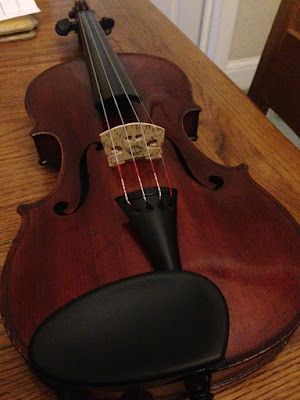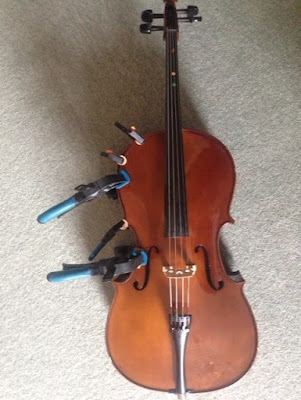Compagnon violin

The antique French "Compagnon" violin all finished last night. It sounds incredible. This full size violin has a clear, bright and ringing voice. I am very pleased with it. Made around 1920 by the renowned Mirecourt factory (workshop) Jérôme Thibouville-Lamy. I fitted this fine violin with German Wittner geared pegs and a super comfy Wittner anti-allergenic chin rest. These geared pegs dispense with the need for fine tuners on the tailpiece, protect the pegbox from wear and allow a longer after string (behind the bridge) length. That reduces tension on the bridge, allowing it to flex ever so slightly under playing, which creates the opportunity for a more flexible tone approach by experienced players. The bridge is a very special professional quality French model, which I cut from a blank to fit and then tuned very carefully to the violin to open the sound without losing string focus and to create just a little extra resonance and ring. The e-string is set at 3mm from the ...



